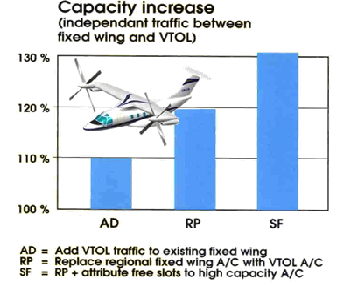Why SNI?
The primary objective of SNI operations is to remove rotorcraft from runway traffic by using rotorcraft-specific, non dependent, IFR procedures
It is expected that the SNI concept is best applied at medium or large airports impacted by runway congestion and (or) noise problems
The Expected Advantages are:
- For the Pilot: shortened approaches (time / fuel savings)
- For the Air Traffic Controller: removes “slow rotorcraft traffic” from runway approach and easier aircraft-rotorcraft separation (including longitudinal wake vortex spacing to runways)
- For airport neighbours: less noise thanks to higher approach routes and steep final legs
- For airport authorities: adds takeoff and landing movements without contribution to runway congestion (increased passenger throughput)
It is proposed that SNI could be implemented via a variety of schemes such as follows:
- Scheme 1: SNI Rotorcraft traffic directly added to the existing Aircraft traffic
- Scheme 2: SNI Rotorcraft are used to replace one part of the regional turboprop traffic. This would requires changes in airlines fleets and transport policy such as using helicopters and tiltrotors as hub-feeders. The advantage that this would bring are that runway slots previously used by turboprops can now be allocated to larger capacity aircraft.

The combined use of helicopters and tiltrotors for hub feeder operations could increase passenger throughput and a number of studies such as those conducted by NASA/Boeing and the EC Airport-4 (FP4 DG-TREN) [1] have shown that up 20% to 30% passenger throughput gains and up to 50% as much delay reduction as a new runway (NASA study) can be obtained.
1. AIRPORT-4 Final Presentation, Reference: R94 B2-4020 SIN 004674. E.C. DGVII (now DG-TREN)